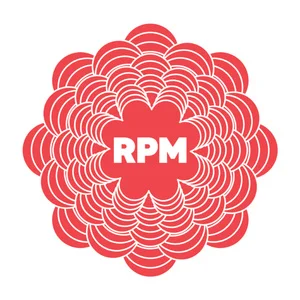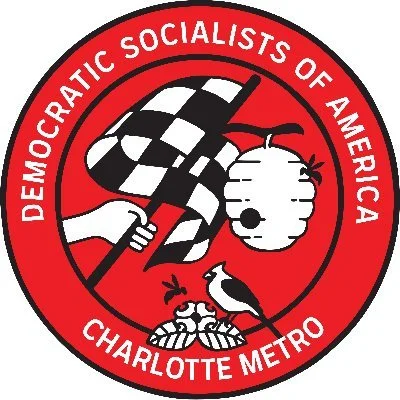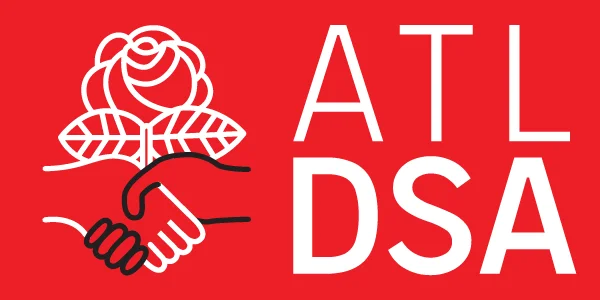
Solidarity in Solitude
You’re listening to Revolution Per Minute on listener sponsored WBAI in NYC broadcasting at 99.5 FM and streaming on your favorite podcast app. To connect with us after the show you can email us at revolutionsnyc@gmail.com. You can find us on our website revolutionsperminute.simplecast.com or on twitter @nycRPM.

Shut it Down and Seize the Means: Public Power Now!
You’re listening to Revolution Per Minute on listener sponsored WBAI in NYC broadcasting at 99.5 FM and streaming on your favorite podcast app. To connect with us after the show you can email us at revolutionsnyc@gmail.com. You can find us on our website revolutionsperminute.simplecast.com or on twitter @nycRPM.

Samelys López and Super Tuesday
You’re listening to Revolution Per Minute on listener sponsored WBAI in NYC broadcasting at 99.5 FM and streaming on your favorite podcast app. To connect with us after the show you can email us at revolutionsnyc@gmail.com. You can find us on our website revolutionsperminute.simplecast.com or on twitter @nycRPM.


Charlotte Metro DSA for Bernie
Today the people of North Carolina, 14 other states, and American Samoa will likely decide the Democratic nominee who will face Trump in the general election in November of 2020. Alongside chapters nationwide, the members of Charlotte Metro DSA have texted and called and knocked on doors in an effort to make sure that person is Senator Bernie Sanders. Since the chapter formally endorsed his candidacy in January , our small group has knocked on 1500 doors - going into neighborhoods every weekend to talk with community members about their struggles and the need for transformative change.
We asked several of our members to reflect on their experience with our local DSA for Bernie campaign, to share what they heard, and discuss why we need to elect Bernie Sanders.
“A woman told us she felt bad about the fact that she had to use her niece's insulin. Her niece was also on dialysis. After her insurance lapsed, she couldn't afford the insulin anymore. I've had several friends that have thousands of dollars worth of medical debt from needing to go to the emergency room, but none of them have needed something so crucial on a daily basis. This is why we need Medicare for All and Sanders is the only candidate truly standing up for it.”
— Corey
“Back in January we met a man who told us his 19 year old sister had just joined the military. Trump had just assassinated Soleimani and he was terrified that she would be deployed to Iran. He said Bernie is the only candidate he trusts to finally end the wars in the Middle East. Medicare for All and Bernie’s plan to make public colleges and universities tuition free also removes the coercive incentives that force poor kids to enlist just to get access to healthcare and education.
In the heavily gentrifying Belmont neighborhood we met a woman who said all but three families on her street had been pushed out of the neighborhood by new luxury development and rising rents. Charlotte at large also has a massive homelessness problem and an affordable housing shortage of 34,000 units. Bernie’s housing plan includes national rent control standards that would fight gentrification, protect tenants against rising rents, and invest $2.5 trillion into new affordable housing.”
— Dallin
“Only Bernie’s policies address the concerns of the American working class - this was made abundantly clear when I talked to people while canvassing. I talked to someone paying $200+ per month for medication, to someone afraid that their sister would be deployed and would die in another pointless war, to young and old people alike concerned that no one seems to be taking climate change seriously. Bernie is the only one prepared to face these issues, and who is tackling them head-on.”
— Morgan
“I felt encouraged this past weekend during our final canvassing push in the neighborhoods off Beatties Ford Rd. We spoke with several people who were excited and eager to let us know they had already voted for Bernie and others who are planning to do so on Tuesday. We also had some good conversations with undecided folks. After we spoke with with one undecided voter about Bernie's platform and asked what he thought, he responded with, ‘Sounds like a winner to me!’ There was even someone in a car honking, cheering and yelling ‘Bernie!’ at us at one point. Days like that just continue to push against the ‘Bernie Bro’ narrative that some are still trying to use to discredit this movement. Feeling good about Tuesday!”
— Allison
We are grateful to everyone who has come out to canvass or phone bank with us over the past few months! And special shout out to Dallin, who stepped up to lead our DSA for Bernie Working Group - thank you for all of your hard work!

Rank & File Labor in Revolt
You’re listening to Revolution Per Minute on listener sponsored WBAI in NYC broadcasting at 99.5 FM and streaming on your favorite podcast app. To connect with us after the show you can email us at revolutionsnyc@gmail.com. You can find us on our website revolutionsperminute.simplecast.com or on twitter @nycRPM.


Feeling the Bern at February General Meeting
Although many members were out of town canvassing for Bernie in South Carolina, our monthly meeting was lively as always. We were delighted to welcome comrades from the new Morehouse College YDSA. We heard a report on electoral activities, especially our independent Bernie for Georgia campaign, and announcements of many important upcoming events, and we passed the bylaw changes (as amended) that were tabled last month. We also met in working groups to get updates and engage with other members active in political education (see photo above), mutual aid, local elections, ecosocialism, Afrosocialism and immigrant justice. Chair Councilman khalid announced that he will be taking a month-long leave of absence to work directly on Bernie’s campaign; Membership Secretary Brandyn Buchanan will serve in his place. We ended by singing the traditional labor anthem “Solidarity Forever” before regrouping for a post-meeting social hour at a friendly Edgewood restaurant. Photos: Barbara Joye


Socialist Self-Care
You’re listening to Revolution Per Minute on listener sponsored WBAI in NYC broadcasting at 99.5 FM and streaming on your favorite podcast app. To connect with us after the show you can email us at revolutionsnyc@gmail.com. You can find us on our website revolutionsperminute.simplecast.com or on twitter @nycRPM.

Seize the MTA
You’re listening to Revolution Per Minute on listener sponsored WBAI in NYC broadcasting at 99.5 FM and streaming on your favorite podcast app. To connect with us after the show you can email us at revolutionsnyc@gmail.com. You can find us on our website revolutionsperminute.simplecast.com or on twitter @nycRPM.


Jay Forth on the connection between capitalism, evangelicalism, and a state of indebtedness

Socialism at the Ballot Box with Phara Souffrant Forrest
You’re listening to Revolution Per Minute on listener sponsored WBAI in NYC broadcasting at 99.5 FM and streaming on your favorite podcast app. To connect with us after the show you can email us at revolutionsnyc@gmail.com. You can find us on our website revolutionsperminute.simplecast.com or on twitter @nycRPM.